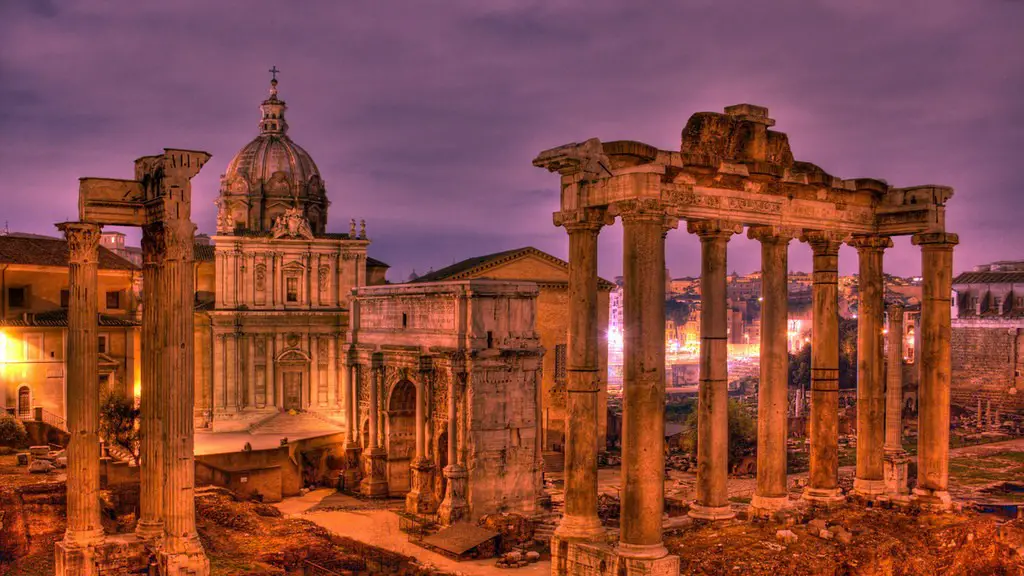Throughout centuries, the role of women in Ancient Rome has been framed and shaped by gender norms that were hard to break. Women’s contribution to everyday life, social customs and religious festivities was very appreciated in Ancient Rome, yet their position in Roman society was still considered inferior. Roman laws, customs and social life was built upon the model of the father being the head of the family, what restricted women’s ability to make decisions on their own. In this article, we will discuss the realities of women’s lives in Ancient Rome, what roles they played both in private and public life, focusing mainly on their legal and social status.
As asserted by renowned historians such as Beard and Crawford, women were placed in a subordinate position within Ancient Roman society and it wasn’t until the 1st century BC that they were granted some recognition. Their main role remained to be wives and mothers, even though they could be seen working in public spaces such as markets, temples, thus performing tasks considered domestics by the Roman upper class. It came as no surprise that, in earlier periods, women were not allowed to vote or to take part in public political affairs, while married women were largely restricted in their choice of actions, often bound to follow the instructions and preferences of their fathers or husbands.
However, despite the limitations of their social position, women from patrician families played an important role in Ancient Rome. They not only held religious cults, but also took part in festivities such as dinner parties, games and sporting events. Furthermore, as pointed out by Panella, women held certain economic responsibilities, like supervising estates and managing the family’s finances, something that was not common in other ancient societies. The only way for women to achieving a higher status was by the marriage with a man of a higher rank, and even then women remained completely under the guardianship of the husband.
In terms of legal and social aspects, Roman law established a clear distinction between freeborn and unfreeborn women, something that also impacted their status within the family. Women were socially regarded as inferior to men and were not allowed to testify in court nor were they granted the right to become a guardian. Nevertheless, some favourable statutes, like the Lex Julia de adulteriis, passed in 17 BC and later amended in AD 9, allowed for more equality between women and men, as Julia Augusta instituted a law which punished adultery and gave married women more autonomy from their husbands.
These particular laws paved the way for an increased presence of married women in the public domain, and to a certain extent their legal and social equal rights among Roman citizens. This development might not seem significant in relation to our modern times, but it was indeed a crucial transformation in Roman women’s integrated role in the daily, religious and legal life.
Women in Military and Governance
In Ancient Rome, as with many other things, it was not common for a woman to take part in public politics and become a leader. Yet, some exceptions were made, such as Livia Drusilla, the wife of Emperor Augustus who, despite not officially taking part in public office, was often referred to as ‘the first lady of the empire’ because of her strong influence over her husband and the Roman court. In the same manner, several women with families connected to power and influence in the imperial era, entered military as an honourable career and engaged in professions such as doctor, innkeeper, market trader and scribe.
For instance, Agrippina the Elder acted as a military commander for her father, who was the Roman general Marcus Vipsanius Agrippa, and in this capacity she commanded Roman troops in the battle of Emporiae during the Cantabrian War of 29 BC. Additionally, in 332 BC a group of priestesses were created to make up the college of Vestal Virgins, enforcing their virginity (only within the temple rituals) while they were paying homage to the goddess Vesta. Lastly, women acting as midwives were held in high esteem not only by the public, but also by Roman authorities.
Therefore, it is clear that women were by no means absent from the political, military or religious venues in Ancient Rome, even if the deck was stacked against them in certain times and circumstances.
Women in Intellectual and Creative Growth
It should be noted that Ancient Rome was among the few societies from their times to value women’s intellectual pursuits, thus it is universally accepted that Rome was one of the most enlightened societies in its days due to its relative acceptance of women’s rights. In contrast to the social stringent rules applied to upper-class Roman women, women belonging to lower classes were actually allowed to own property, work and even to accompany their husbands in public events.
In the intellectual area, the writings of Cornelia the Elder and Sulpicia were considered highly acclaimed, while some female artists like Irene, the daughter of Roman Emperor Constantius Chlorus, were even honoured with Latin inscriptions praising their talent and skill.
Throughout the history of Ancient Rome, several women were held as examples of moral virtue and strength, among which are Verginia, Claudia Quinta and Fabiola, who all escaped the status quo determined by Roman customs and succeeded by personal determination and strength.
Women in Slavery and Abolitionist Movements
The issue of slavery was highly contested in early Rome. According to estimates, up to one third of the population in the Imperial era was made up of slaves. Therefore, the contribution of slaves to Roman society can’t be overlooked and women were often found in such positions. In contrast to the life of a free women, the experiences of female slaves were very different as they were mostly relegated to house duties, field labour and prostitution.
Sadly, female slaves had no legal rights and could be sold, bought, abused and murdered with impunity. These particular situations motivated abolitionist movements like the one led by the Stoic philosopher Musonius Rufus, who advocated for a the end of female slavery.
Certainly, unspeakable acts of abuse and injustice were inflicted upon a great number of Roman female slaves, and although slavery was abolished after the fall of Ancient Rome such practices of subjugation seem to have repeated in subsequent civilizations.
Women in Myths and Legends
Myths and legends are a large active part of Roman culture and the stories involving women are plenty. From Lucretia and Juno, to Minerva and Venus, powerful, self-reliant women were often the forefront characters in these popular stories, which uphold the strength and courage of female characters.
In Roman mythology the female figure of Fortuna was a representation of luck and good fortune. To this day, people often see the image of Fortuna’s wheel as a reminder of the everchanging fortunes of life. Furthermore, the Roman goddesses were the originals of families, love and religious cults, thus their actions and influences on Roman culture were of great importance.
In addition to the stories of Roman goddess, human women were also an important part of these tales, as it was not uncommon for heroes, such as Horatius or Mucius, to have a female companion or lover in legend, something that sheds light on the heroines of these classical societies.
Women in Traditional Roman Customs
Apart from the religious aspect, women had an active role in the celebration of traditional rituals. Festivities such as the Matronalia, in honour of Juno on the 1st of March, during which matrons exchanged gifts and sharpened their tools, were celebrated in Rome as a way to honour the wives and mothers in the family. Similarly, the Vinalia, held on the 23rd of April, was used to honour women and to raise awareness of their condition and situation in Roman society.
Additionally, several family-oriented holidays were organized in parks and private gardens, like Vinales, which were open to everyone, even women, and were a way to restore the spirit of family life in Rome. These gatherings included performances of theatrical plays, acrobatics, music, martial arts and sporting events, as well as dinners, dancing and storytelling.
It is true that the specific role of women was rather vague in Ancient Rome, but nevertheless it should not be overlooked that women were of utmost importance in the daily life of Roman citizens. Not only did they take part in the religious, civil and entertainment-related elements of their society, but also directly shaped its future. For that reason, one cannot forget the impact Roman women had both in the public and private sphere.




